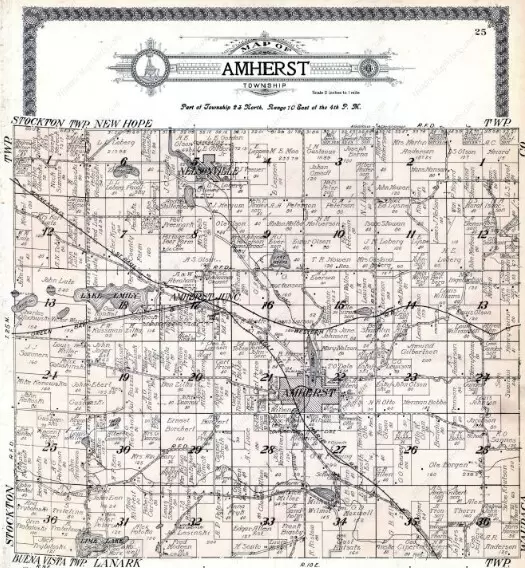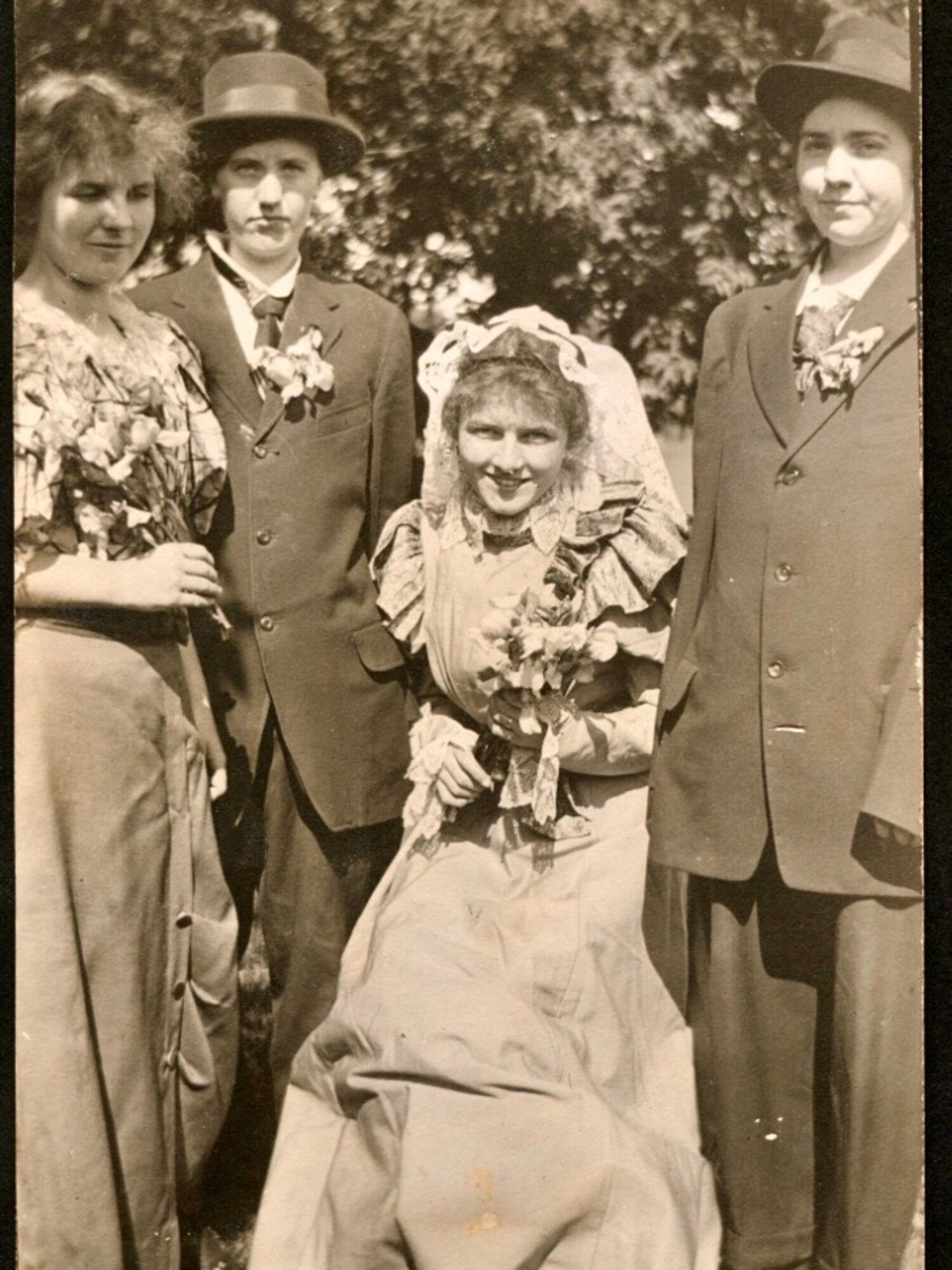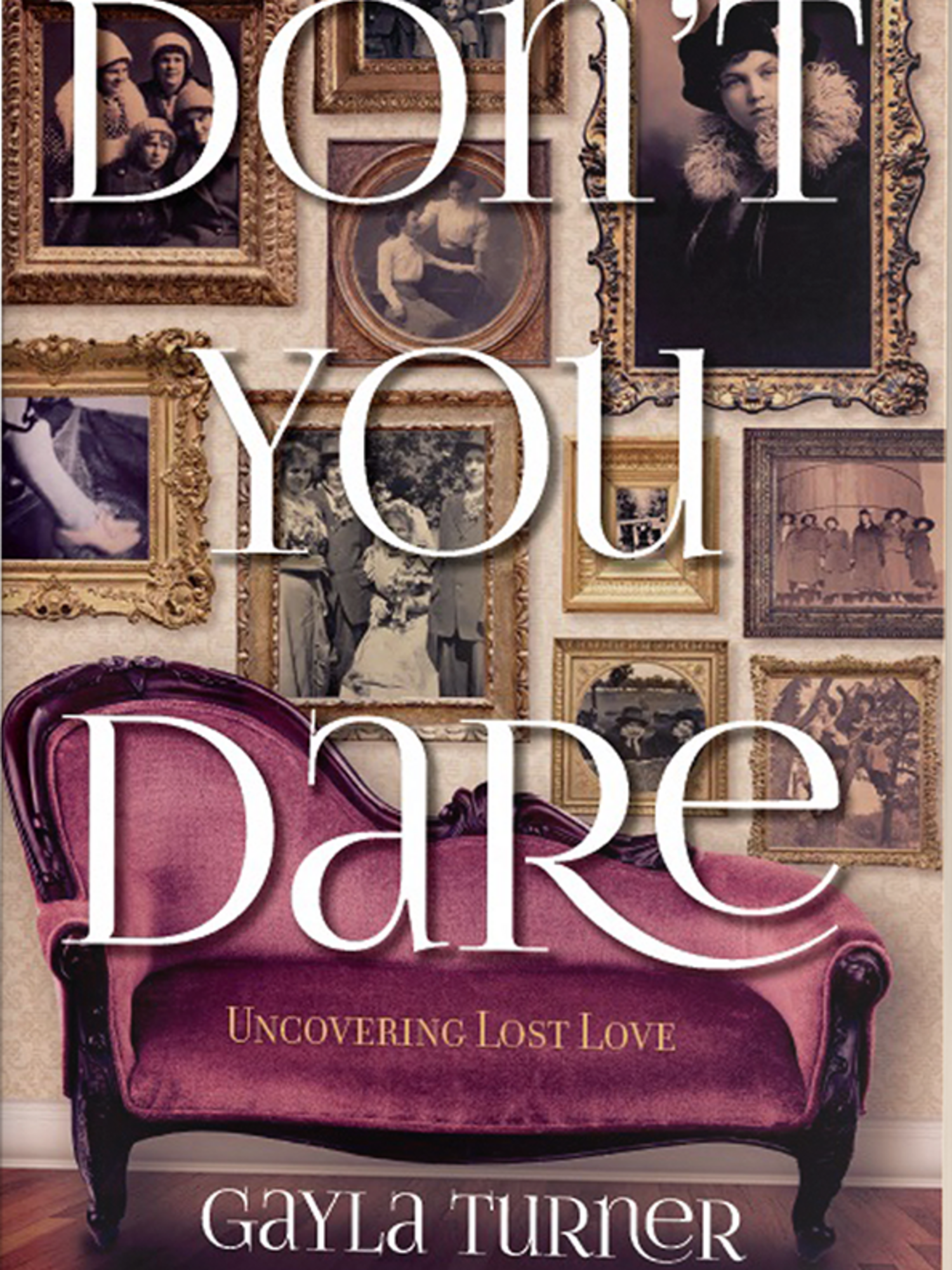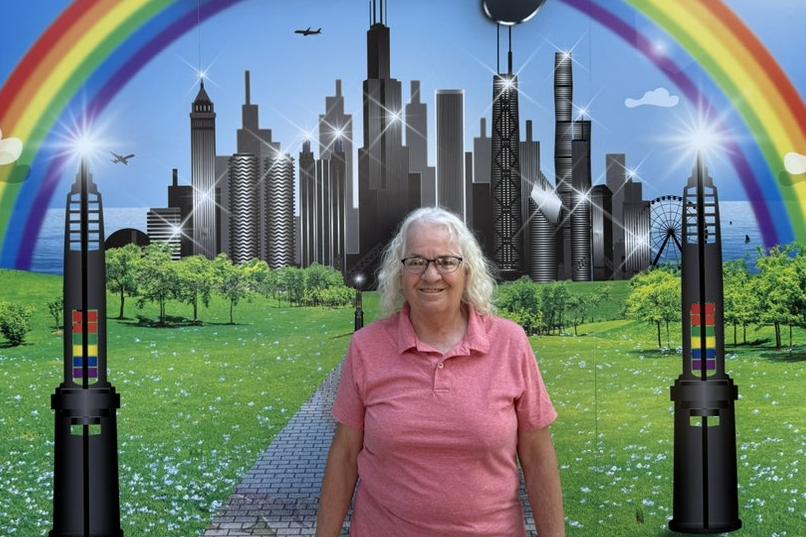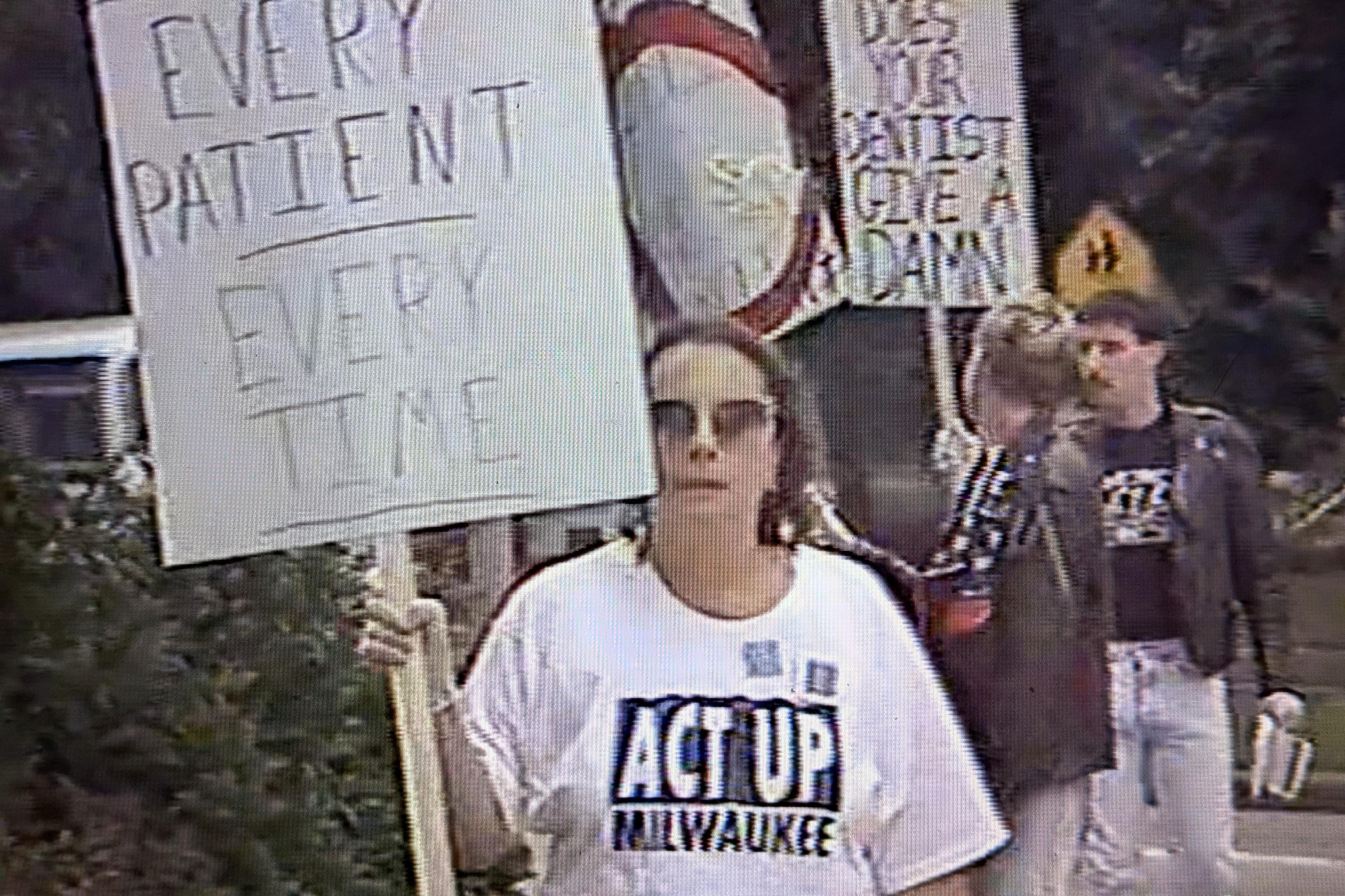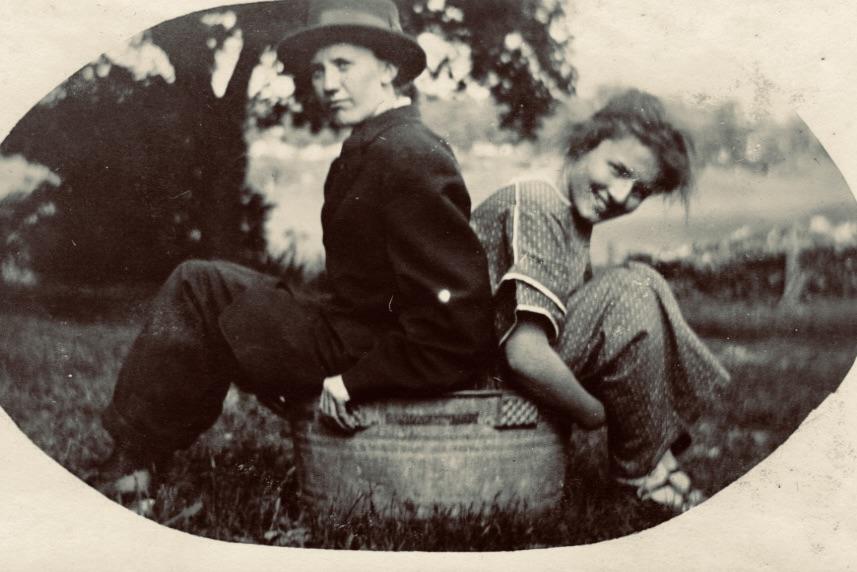
Ruby Peterson: a story of secret love, courage, and sacrifice

"I kept asking myself, why and how Amherst, Wisconsin?"
For years, the boxes sat tucked away, moved from place to place, their contents a mystery.
Ruby Peterson carried them with her through life, never revealing what they held. It wasn't until decades after her death that her granddaughter, Gayla, would uncover the truth – a story of love, bravery, and independence that defied the crushing conformity of social expectations.
The photos within those boxes weren't typical stoic portraits of the time. Instead, they depicted incredibly happy people with joy radiating from the images.
But these were dangerous memories, and a secret Ruby carried at great risk.
Cora was quite well-known to the villagers of Amherst. As an unmarried businesswoman, she was seen as unusual, eccentric, and slightly wild. She owned properties, automobiles, and the luxuries of enjoying them without a man in her life.
Despite this questionable reputation, Cora was admired for her generosity and philanthropy, which seemed to excuse her lifestyle.
Through a series of private parties and outings, Cora introduced Ruby to a world where women could create a society for themselves. This was a life far, far away from the eyes of disapproving families, nosy neighbors, and village gossip.
Many of these men chose male expression and engaged in same-sex romances, simply because that’s who they knew themselves to be. Ruby soon met a man named Fritz, who she later was Elizabeth Fitzgerald.
"Some of the gents here are ladies. But rest assured, they are perfect gentlemen. They just prefer to wear the clothing that they are most comfortable with."
These freedoms were astonishing for young Ruby, who felt like she’d gone straight through the looking glass.
Ruby found herself drawn to Fritz, but Fritz’s parents forced her into an arranged marriage to a man. Ruby was heartbroken. She befriended Ella Karnopp, and they bonded quickly and deeply. The women organized a camping trip at nearby Camp Cleghorn, where meaningful lifelong memories were born.
Their friendship blossomed into love, and Ella proposed marriage. Ruby wanted to be her wife. They staged an unconventional wedding at the Peterson home, with Ruby’s younger brother serving as photographer.
Despite the wedding, Ella returned to her life in Sheboygan while Ruby stayed behind. Ella planned to move to Portland, and asked Ruby to join her.
Ruby was tormented: could she really leave behind her family and the life she knew – for a life with the woman she loved?
Clear and ever-present dangers
This world was fraught with danger. Women who defied social norms were ostracized, criminalized, institutionalized, brutalized, and even murdered. The mere suspicion of being a “deviant” could have life-threatening consequences. In other Midwest cities, women were beaten, tortured, disfigured, sexually assaulted, and even murdered -- simply for how they expressed their gender.
In Kansas City, Miss Mary Chamberlin was ambushed by four men, stripped naked, and covered in hot tar, while two of the men sexually pleasured themselves while watching her suffer. They were only sentenced to one year in jail for the crime. As a warning to local women, the Stevens Point Journal reported the story on November 22, 1911, not as front page news -- but on the back page of the newspaper.
The early 1900s were a time of strict social morality, with organizations like the National Purity Party and the Christian Morality Group enforcing "American values.” They leveraged the Comstock Law to monitor, police, and persecute anyone sending or receiving “deviant” mail. Childless people were seen as deplorable by a growing eugenics movement. Same-gender relationships were equated with disloyalty and a threat to the American way of life.
On July 30, 1913, Wisconsin passed a law allowing “mental defectives” (as defined by local authorities) to be sterilized. This legislation was shockingly common, with at least 30 states sharing a similar statute.
States loosely defined “mental defectives” on purpose: these might be people with neurological conditions (i.e. epilepsy, ALS) or congenital conditions (i.e., Downs syndrome, cerebral palsy, multiple sclerosis.)
Or they might just be people who were socially unacceptable (i.e., promiscuous, “hysterical,” or headstrong women.) If the next of kin refused sterilization, the patients were often institutionalized for life, and some were even lobotomized.
By 1934, when this legal provision was challenged, over 600 Wisconsin citizens had been forcibly sterilized.
These were very, very dangerous times for anyone seen as "different."
An impossible decision
In 1916, Ruby's family sold their farm and moved into Amherst, and her father began planning her marriage to Arnold Anderson. Arnold had never had a girlfriend, nor seemed to have any initial romantic interest in Ruby, and her heart already belonged to one person.
Ruby promised to marry Arnold after the war. Her father warned her: if she refused her obligations, she would be forced to leave the family home. Ultimately, she was railroaded into an impossible decision: she sacrificed her one true love for a loveless marriage.
While the decision relieved her family, community, and society, it left her devastated and despondent. After Ella left for the West Coast alone, Ruby sank into a deep depression that required hospitalization in Stevens Point.
When Arnold returned from the war, the couple married August 21, 1921, and departed Amherst for a new life together.
Ella Karnopp died in 1948. She was buried in Almond, Wisconsin – not far from the spaces where she and Ruby fell in love.
In her senior years, Ruby returned to Camp Cleghorn with Gayla and her family. It’s impossible to know what that moment felt like: to revisit the place where a great love was born, and decades later, still being unable to speak its name.
Ruby Peterson passed away on April 12, 1977, her story still unspoken.
Reflections on a long-lost love
Gayla knows that her discoveries were not accidental.
As a lesbian herself, Gayla feels she was meant to uncover Grandma Ruby’s story, as she was the family member most uniquely qualified to understand and celebrate it. Gayla traveled to Amherst, Wisconsin to explore her grandmother’s past, revisit the spaces where she lived and loved, and try to understand who Ruby Peterson really was. At times, she's even speculated that her grandmother left these clues for her to find.
The timing of her discovery was also historically poignant. Two weeks after the 100th anniversary of Ruby and Ella's wedding, the U.S. Supreme Court legalized marriage equality in the United States on June 26, 2015.
Gayla's experience inspired her to write Don’t You Dare, a novel sharing her grandmother’s story, and she is now developing a screenplay.
The boxes, filled with photos and memories, remain a silent testament to the love and courage of these remarkable women. The photos represent a life lived in the shadows, a love that endured despite the risks. Ruby's decision to preserve these memories, to carry them with her, was an act of bravery, a way of ensuring that their love would not be forgotten.
And, in the end, it was not – and now, it will never be again.
Thank you to Gayla Turner for sharing Ruby's story and photos with the Wisconsin LGBTQ History Project. We have always been here -- and our unspoken stories will always find a way to be told.
recent blog posts
December 17, 2025 | Michail Takach
December 16, 2025 | Michail Takach
December 01, 2025 | Dan Fons
The concept for this web site was envisioned by Don Schwamb in 2003, and over the next 15 years, he was the sole researcher, programmer and primary contributor, bearing all costs for hosting the web site personally.
